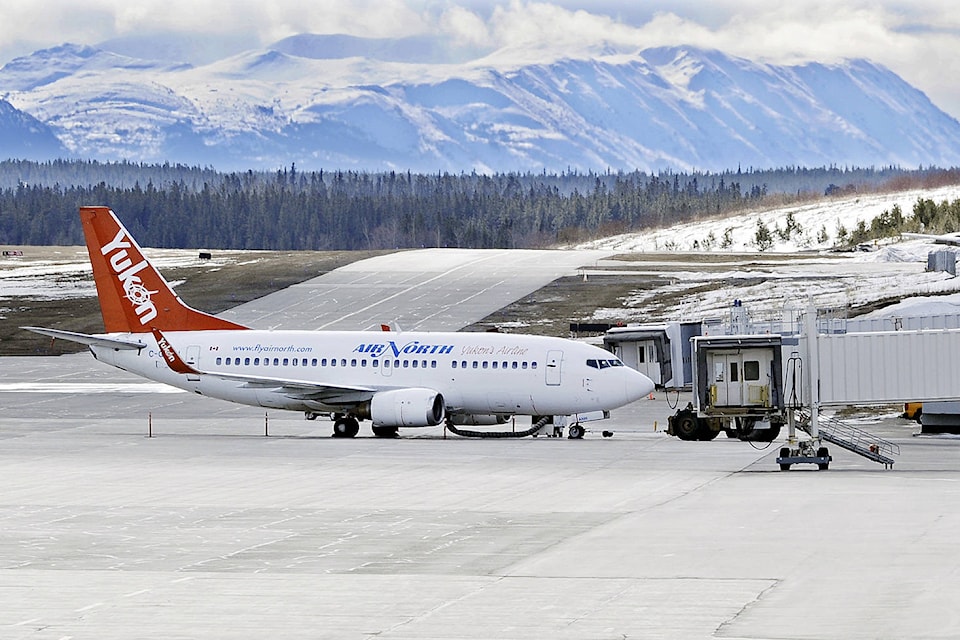Joe Sparling
Special to the News
Our main concern with the Public Airports Act was that it did not provide for checks and balances on government spending and it did not provide for stakeholder input with respect to how the Yukon government will operate our airports. A better consultation process would have allowed these concerns to emerge prior to the drafting of the PAA.
We have now been assured that a change will be made to the act and we have received specific commitments from YG that have addressed our concerns. We wish to thank the government for listening.
In particular we acknowledge the specific commitment by YG to refrain from escalating existing fees and from implementing new ones.
Here is why we were so sensitive to the government’s original proposal.
It is tempting for governments to look at airline travellers as easy money. Using the Yukon as an example, a $10 tax on each passenger boarding at the Whitehorse airport would theoretically generate more than $1.8 million in revenue. As an airline operator, we learned long ago that in practice it doesn’t work like that. If we thought that we could generate $1.8 million in additional revenue by adding $10 to our fares, we would likely be doing just that.
There is plenty of evidence to show that air travellers in this market are price elastic. In other words, when the cost of air travel drops people travel more and when the cost of air travel increases the impact is opposite. A good illustration is that in 2001, average one-way gateway airfares priced at more than $350 produced about 154,000 travellers at YXY. In 2016, average gateway pricing of $192 produced over 341,000 travelers at YXY. In other words, a 46 per cent drop in airfares produced a 122 per cent increase in traffic. While some of this growth might be attributed to population and/or economic growth, it is pretty clear that most of it came as a result of prices.
Yellowknife’s airport provides a good illustration of how price elasticity can work when travel costs rise. In July, despite vigorous opposition from industry, the N.W.T. government imposed a $20 airport improvement fee and also more than tripled landing and terminal fees. The effect of this was to increase air travel costs in the Yellowknife market by close to 10 per cent. Although it is still too early to disclose a trend with any degree of confidence, our total year-over-year passenger numbers grew by 8.3 per cent during July, August and September, while our Yellowknife market passenger numbers fell by 3.7 per cent. While there may be other factors at play, there is little doubt that higher travel costs are having a negative impact on air travel at YZF.
It is my observation that when going through the budgeting process, governments often look for ways to increase revenues rather than to reduce expenses. This should not be surprising given that those charged with this exercise are likely to be helped by revenue increases and hurt by cost cutting. Under these circumstances, one should expect that industry input could be used to provide some balance to the discussion. Using the hypothetical airport fee example for Whitehorse, we estimate that every dollar in fees collected would cost the economy about $1 in visitor spending.
A recent study done on behalf of the National Airlines Council of Canada (NACC) suggests that the elimination of federal airport rents, the air traveller security charge, and the excise tax on jet fuel would result in lower airfares which, based on the price elasticity of air travelers, would grow traffic by as much as 10 per cent. The economic impact of this growth, including catalytic effects could offset the revenue loss for the government.
It has been suggested that all airports in Canada have airport improvement fees. Our records show that only 48 Canadian airports charge an AIF. This number represents about 20 per cent of the communities in Canada that receive scheduled air service. When the federal government began to divest itself of airports in the early 1990s, this led to the formation of airport authorities which are quasi-not-for-profit organizations which have a high degree of monopoly power but are not subject to any sort of monopoly regulation.
Some authorities began to charge AIFs in order to fund specific capital projects. The intention was to cancel the AIF once the project was funded. To the best of our knowledge, only Abbotsford (YXX) has ever cancelled an AIF.
The manager at YXX said “the elimination of the AIF will signal to the industry that Abbotsford International Airport is an efficient, lean operation maintaining a business-friendly environment.”
One might observe the proliferation of art exhibits and other amenities at our Canadian airports and compare this with U.S. airports which seem to remain more focused on their primary role: the departure and arrival of airline passengers. Canadian fees and the different treatment of user fees by the U.S. have together given American air carriers a cost advantage of more than 30 per cent compared to Canadian carriers. This is causing more than five per cent of Canadian air travellers to drive across the border to fly with an American carrier.
Some might suggest it is appropriate to recover the airport costs from the travelling public. This might be appropriate if air travel was a pure luxury. However, it is anything but a luxury in Canada, especially in the North. A safe and affordable air transportation network improves our economy, quality of life and makes our region a competitive place to work and do business. In Canada, VIA Rail collects about $500 million each year in subsidies and in the U.S., the nine largest airports receive about $400 million each year in subsidies.
We don’t have toll booths on our roads and highways and we should not have them at our airports either.
Joe Sparling is the president of Air North.
